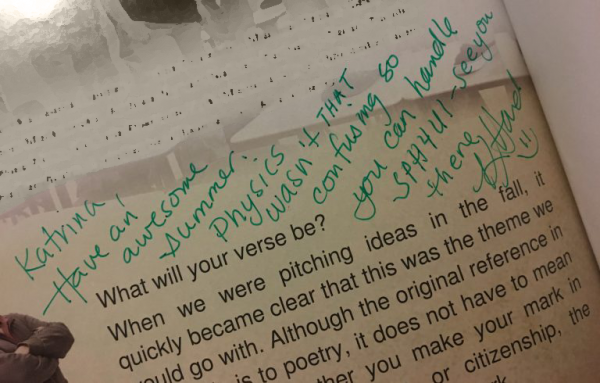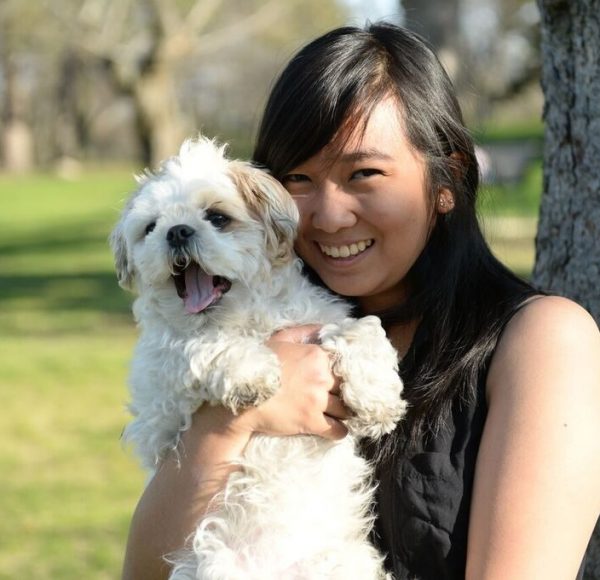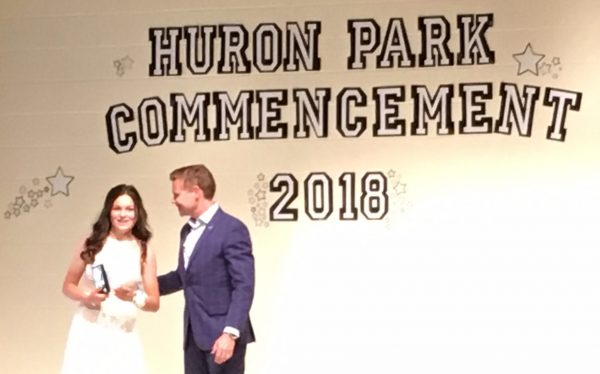The Cost of a STEM Education
Another major factor is simply the cost of a science and technology education – you can’t learn computer science without a working computer!
Technology has shaped education and how students learn – many teachers are opting to use online assignment submission, encouraging students to download lessons from a school website, and communicating to their students via Twitter. I still remember going to the computer lab with my class to play Math Circus, a series of circus mini-games geared to teach children math.
There are also so many free resources available for educators that can supplement their lessons and help students. Many of these resources are available through an app on a mobile platforms but what about schools and communities that don’t have the funds to access such technology?
Some schools have a Bring Your Own Device program to save the cost of buying a class set of tablets or laptops. Some schools discourage this program because it is not guaranteed that all students will have a device so they will purchase their own technology.
Technology Supports Inquiry Learning:
Whilst technology may have been a ‘want’ ten years ago, now it is a ‘need’ for educators as more provinces and school boards make 21st Century learning skills and inquiry skills a requirement for classrooms.
Inquiry-based learning is a pedagogy that is focused on learning using constructivism, which involves an individual’s participation to facilitate their own learning. In other words, a student must be engaged, actively thinking, asking questions, making connections between their knowledge and real-life examples, and use hands-on activities to concretize their theoretical knowledge (Minner, Levy, and Century, 2010, p. 476-476). In fact, inquiry-based learning has been shown to improve grades in physical science courses for non-STEM students (Hemraj-Benny and Beckford, 2014).
Inquiry learning is a fundamental aspect of science education since the nature of the subject is to ask questions and use what you know to develop a way to answer your question.
Even if a school can afford computer carts or tablets, there are recurring costs in a science department. In a science department equipment such as glassware, reagents, and rats for dissection must be replenished every year in order to do experiments.
Experiments support a student’s inquiry skills which are important for a budding scientist but with the high cost associated with science experiments, how can students learn?
As previously mentioned in another blog, I struggled to understand physics so I only fully grasped it when I did the experiments. I was lucky to have a teacher that did an experiment at the end of every unit and to be in a well-equipped physics classroom with an air track, metal carts, optics equipment, and PASCO sensors. I cannot imagine passing my high school physics classes if I didn’t have the resources available.
What Can We Do?
There are many government funded outreach programs that bring science experiments to your classroom for free. Quite often, university students volunteer to visit the classroom for a workshop and they will bring all the necessary equipment to perform an experiment.
In my school we frequently had visitors for McMaster science and engineering outreach programs to do a specific experiment for that day. During one of these visits, each group of students were able to build their own circuit and create a solar car that we later tested outside.
There are many programs like this all around Canada and a lot of them are affiliated with a post-secondary institution so it can double as a career-planning workshop for your students. One of the biggest outreach programs and an incredible resource for science educators in Canada is Let’s Talk Science. Let’s Talk Science conveniently provides a page dedicated to finding a local outreach:
In terms of technology, there are a lot of grants available from some of the biggest companies in Canada such as the Best Buy School Tech Grant which also has a specific STEM school category and the Staples Superpower Your School Contest for environmentally conscious schools. Check out our AYVA grant page to see what’s available!
References:
Hemraj-Benny, T., & Beckford, I. (2014). Cooperative and Inquiry-Based Learning Utilizing Art-Related Topics: Teaching Chemistry to Community College Nonscience Majors. Journal of Chemical Education, 91, p. 1618-1622
Minner, D.D., Levy, A.J., & Century, J. (2010). Inquiry-based science instruction—what is it and does it matter? Results from a research synthesis years 1984 to 2002. Jouurnal of Research in Science Teaching, 47(4), p.474-496.


 My name is Katrina and I started at AYVA in January as a co-op student from the University of Guelph. I am a Biological and Pharmaceutical Chemistry major and STEM education has always been something that I am passionate about. I feel like I am in a unique position to help improve it through AYVA as a student who has recently experienced secondary science education and is currently studying science in university. I have some perspective on how technology can be used to improve learning having used PASCO technology both in high school and university.
My name is Katrina and I started at AYVA in January as a co-op student from the University of Guelph. I am a Biological and Pharmaceutical Chemistry major and STEM education has always been something that I am passionate about. I feel like I am in a unique position to help improve it through AYVA as a student who has recently experienced secondary science education and is currently studying science in university. I have some perspective on how technology can be used to improve learning having used PASCO technology both in high school and university.




 The Augustana Campus chemistry labs have traditionally been perfectly acceptable, but have yielded somewhat standard chemistry experiments with very typical analysis. As a satellite campus of the University of Alberta, located in Camrose, Alberta, we have strived to be almost an extension of our North Campus sibling, which has proved problematic within the constraints of a 100 kilometers distance. Recently, things have changed. Last summer, we diverged from this straightforward and customary path and decided to do something slightly different. Along with our newly renovated labs—that encourage thought and collaboration—we have fundamentally changed our first-year chemistry lab experiments, which mean that different analyzation techniques are needed. Gone are vitamin C titrations with Tang and tablets, replaced by extraction techniques and spectral analysis. Hand-held spectroscopes have been replaced with a fiber optic cable in a light emissions lab while also adding a light measurement for chemiluminescence.
The Augustana Campus chemistry labs have traditionally been perfectly acceptable, but have yielded somewhat standard chemistry experiments with very typical analysis. As a satellite campus of the University of Alberta, located in Camrose, Alberta, we have strived to be almost an extension of our North Campus sibling, which has proved problematic within the constraints of a 100 kilometers distance. Recently, things have changed. Last summer, we diverged from this straightforward and customary path and decided to do something slightly different. Along with our newly renovated labs—that encourage thought and collaboration—we have fundamentally changed our first-year chemistry lab experiments, which mean that different analyzation techniques are needed. Gone are vitamin C titrations with Tang and tablets, replaced by extraction techniques and spectral analysis. Hand-held spectroscopes have been replaced with a fiber optic cable in a light emissions lab while also adding a light measurement for chemiluminescence. Our previous vitamin C laboratory experiment was based in a traditional vein, where titrations were used to determine the vitamin C content in both Tang (a powdered orange drink very few students today have ever experienced) and 500mg vitamin C tablets. Being a “traditional” lab exercise meant that most students likely had seen this done in high school or had done this very titration themselves. Our goal was to create an experience where the students learn a new analytical technique by extracting vitamin C from a pepper, then determining the vitamin C concentration from a standard calibration curve on a
Our previous vitamin C laboratory experiment was based in a traditional vein, where titrations were used to determine the vitamin C content in both Tang (a powdered orange drink very few students today have ever experienced) and 500mg vitamin C tablets. Being a “traditional” lab exercise meant that most students likely had seen this done in high school or had done this very titration themselves. Our goal was to create an experience where the students learn a new analytical technique by extracting vitamin C from a pepper, then determining the vitamin C concentration from a standard calibration curve on a 

 Light emissions lab experiments can be tedious at best. You need to constantly be looking through a hand-held spectroscope, which is exactly what we were asking our students to do. Also, we were looking at lights, flame tests and emission tubes with said spectroscopes. Throughout all of this, we weren’t asking the students to really do anything else, chemically speaking. Chemiluminescence and chromatography columns were two things we decided to add into our updated labs, along with the fiber optic cable accessory for the Wireless Spectrometers (as well as scaling back the spectroscope use). In the first part of our experiment, students would activate a glow stick and add the content to our 3D printed Light Calorimeter, then read the light emitted using the
Light emissions lab experiments can be tedious at best. You need to constantly be looking through a hand-held spectroscope, which is exactly what we were asking our students to do. Also, we were looking at lights, flame tests and emission tubes with said spectroscopes. Throughout all of this, we weren’t asking the students to really do anything else, chemically speaking. Chemiluminescence and chromatography columns were two things we decided to add into our updated labs, along with the fiber optic cable accessory for the Wireless Spectrometers (as well as scaling back the spectroscope use). In the first part of our experiment, students would activate a glow stick and add the content to our 3D printed Light Calorimeter, then read the light emitted using the  By using this method, we wanted students to learn not only about columns and their ability to separate mixtures but also to get comfortable learning how to collect data using a sensor and a data logger (in this case an iPad). In the second part of our experiment, we still use traditional light emission tubes (Argon, Helium, etc.) where we use spectroscopes to obtain the emission spectrum lines. For the hydrogen tube, however, we set up the
By using this method, we wanted students to learn not only about columns and their ability to separate mixtures but also to get comfortable learning how to collect data using a sensor and a data logger (in this case an iPad). In the second part of our experiment, we still use traditional light emission tubes (Argon, Helium, etc.) where we use spectroscopes to obtain the emission spectrum lines. For the hydrogen tube, however, we set up the  Since the wireless sensors are easily incorporated into our lab designs, we have set our sights on adding the brand new
Since the wireless sensors are easily incorporated into our lab designs, we have set our sights on adding the brand new  We also have a unique
We also have a unique